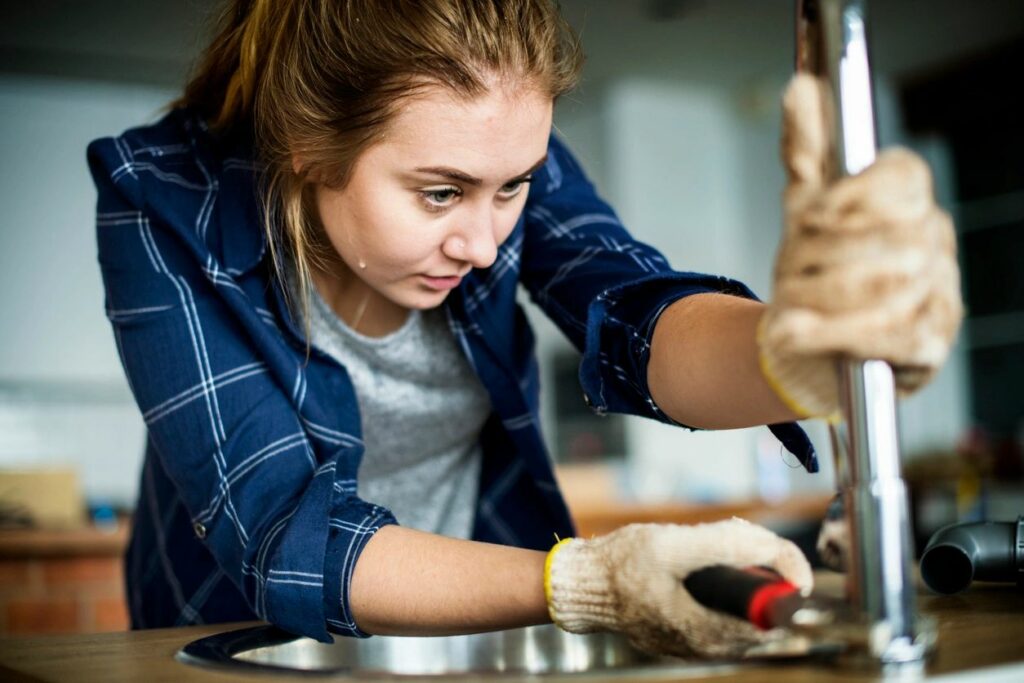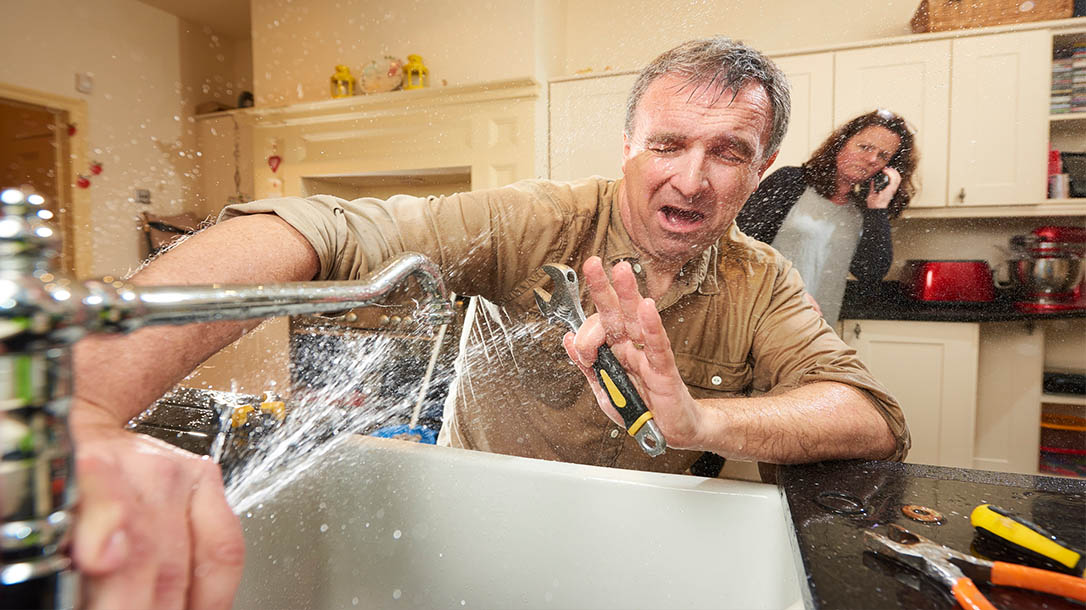Which It's Essential to Correct a Leaking Faucet
Which It's Essential to Correct a Leaking Faucet
Blog Article
Just about everyone may have their personal opinions with regards to Should I Repair or Replace a Leaky Faucet?.

Dripping taps could feel like a minor trouble, however their influence surpasses simply the inconvenience of the noise. From wasting water to sustaining unnecessary monetary prices and wellness dangers, neglecting a trickling tap can lead to different consequences. In this short article, we'll delve into why it's important to address this typical household concern quickly and effectively.
Waste of Water
Ecological Impact
Dripping taps contribute significantly to water wastefulness. According to the Epa (EPA), a single faucet leaking at one drip per secondly can waste greater than 3,000 gallons of water each year. This not just stress water sources however also affects communities and wild animals dependent on them.
Step-by-Step Guide to Repairing a Dripping Faucet
Devices Called for
Before attempting to fix a leaking faucet, gather the required tools, consisting of an adjustable wrench, screwdrivers, substitute parts (such as washing machines or cartridges), and plumber's tape.
Typical Faucet Issues and Their Solutions
Determine the kind of faucet and the particular problem creating the drip. Usual problems consist of damaged washing machines, rusty valve seats, or faulty O-rings. Refer to supplier directions or on the internet tutorials for step-by-step support on repairs.
Financial Prices
Boosted Water Bills
Beyond the environmental effect, dripping taps can inflate water bills significantly. The accumulated wastage gradually equates right into greater energy costs, which could have been prevented with prompt repair work.
Possible Residential Or Commercial Property Damage
Furthermore, extended dripping can bring about harm to components and surface areas bordering the faucet. Water accumulation can trigger discoloration, deterioration, and also structural issues if left neglected, causing additional repair costs.
Health Worries
Mold and Mildew Growth
The continuous visibility of dampness from a trickling faucet develops an excellent environment for mold and mildew and mildew development. These fungis not only compromise interior air quality but also present wellness risks, specifically for people with breathing conditions or allergic reactions.
Waterborne Illness
Stagnant water in dripping faucets can come to be a breeding place for microorganisms and various other microorganisms, enhancing the threat of waterborne diseases. Pollutants such as Legionella microorganisms grow in stationary water, potentially leading to serious health problems when ingested or breathed in.
Do it yourself vs. Professional Repair work
Advantages and disadvantages of DIY Fixing
While some might try to deal with a leaking tap themselves, DIY repair work include their own set of obstacles. Without correct knowledge and devices, do it yourself attempts can aggravate the concern or cause incomplete repair services, prolonging the issue.
Advantages of Hiring an Expert Plumber
Employing a professional plumber makes sure that the underlying root cause of the trickling faucet is addressed successfully. Plumbing professionals possess the competence and devices to diagnose and fix tap problems effectively, conserving time and decreasing the danger of additional damage.
Environmental Obligation
Specific Payment to Preservation
Taking duty for repairing leaking faucets straightens with wider efforts toward water conservation and environmental sustainability. Every person's actions jointly make a considerable effect on maintaining precious resources.
Sustainable Living Practices
By prioritizing prompt repair services and taking on water-saving routines, people add to sustainable living practices that profit both present and future generations.
Preventive Measures
Normal Upkeep Tips
To prevent trickling taps, do routine maintenance such as cleaning aerators, evaluating for leakages, and changing damaged components without delay. In addition, take into consideration setting up water-saving gadgets or updating to a lot more effective fixtures.
Relevance of Prompt Fixes
Addressing leaking taps as soon as they're noticed protects against more water wastage and prospective damage, eventually conserving both water and money in the future.
Influence On Property Worth
Assumption of Well-Maintained Property
Preserving a home in good condition, including dealing with maintenance concerns like leaking faucets, improves its perceived worth and charm amongst possible customers or occupants.
Influence on Resale Value
Features with well-maintained plumbing components, including taps, command higher resale values in the property market. Resolving dripping taps can add to a positive impact throughout property examinations and arrangements.
Final thought
Dealing with a dripping faucet goes beyond simple ease; it's a necessary action toward preserving water, reducing financial expenses, and securing wellness and residential property. Whether via do it yourself repair work or specialist support, taking action to take care of trickling faucets is a tiny yet impactful way to advertise responsible stewardship of resources and add to a healthier, extra sustainable future.
How to Fix a Dripping or Leaky Faucet
A leaking faucet is one of the most common problems that homeowners encounter, but it being commonplace doesn’t make it any less annoying. The constant drip drip drip of a leaking bathtub faucet, showerhead, or sink tap can disturb your home’s serenity. Left neglected, a dripping faucet can also result in higher water bills and discoloration or mold growth in your sink or plumbing fixtures.
Fortunately, you don’t have to be a trained plumber to know how to stop a dripping faucet. With some basic tools, replacement parts, and a little patience, leaky faucet repair is a breeze. In this article, we’ll explain what causes dripping faucets and how you can fix them.
What Causes a Leaking Faucet?
Kitchen and bathroom faucets come in all manner of designs, but most involve some combination of valves, O-rings, seals, and washers. The O-ring is usually the weakest link, but any one of these pieces can wear down over time. Heat, moisture, temperature fluctuations, minerals, mold, and movement can contribute to warping and corrosion, breaking the watertight seal. This just comes with the territory of being a homeowner. Everything is always subject to wear and tear, and some component parts of your appliances and fixtures need to be replaced on occasion. At least replacement O-rings are cheap!
More rarely, dripping faucets can be a symptom of excessively high water pressure. Were this the case in your home, you would probably notice that the leak is not isolated to one faucet. Water pressure issues are harder to resolve on your own. We recommend contacting a professional plumber if you suspect your water pressure is too high.
How to Fix a Dripping Faucet
Pipe wrench or monkey wrench Allen wrench set Screwdrivers Old towel or rag Shut off the water.
Before you do anything, you need to turn off the water to keep from drenching your kitchen or bathroom. You should find a valve under the sink and against the wall. Once you’ve turned this valve, try turning the faucet on to confirm that the water source has been cut off.
If you can’t locate your local valve for the faucet you’re working on, you can always shut off the water to the house at the main valve. Of course, this will prohibit anyone from using the sinks, showers, or toilets while you’re working on the faucet that’s giving you trouble.
Plug or block the drain.
You’ll be disassembling the faucet and removing some small bits of hardware. Plug the drain with a stopper or rag to avoid the possibility of a small screw falling into your P-trap.
Take apart the faucet assembly.
There are several varieties of kitchen and bathroom faucets, each with its own manner of assembly. For detailed instructions on how to disassemble your faucet, you can refer to the fixture’s manual or contact the manufacturer. If you know whether you have a ball, disc, cartridge, or compression faucet, you can find detailed schematics online.
In general, you need to begin by removing the faucet handles. You might notice a small screw that you’ll need to remove with a screwdriver or Allen wrench. If you don’t see any visible securing hardware, it’s likely hidden under a decorative cap that can be unscrewed or popped off with flathead screwdriver.
Remove each piece methodically, consulting a schematic when necessary. Take notes or arrange the pieces in such a way to make it easier to correctly reassemble the faucet later.
Remove the cartridge.
Once you’ve removed the handles and securing hardware, you should be able to remove the valve cartridge or stem. Some cartridges will slide right out. Other faucet models will require you to loosen a nut with a pipe wrench before you can remove the valve stem.
Examine the exposed hardware.
With the cartridge or stem removed, inspect the component parts. Check the rubber O-rings for wear and tear. Also examine the seat washer for corrosion or other damage. These pieces are usually the responsible parties for a dripping faucet, but it’s worth inspecting the other component parts while you have the faucet disassembled.
Find replacement parts.
Once you’ve identified which faucet component has failed, find an identical replacement. Your local hardware store should have O-rings, seat washers, and other standard components in stock. If you have a luxury or uncommon faucet, you may have to contact the manufacturer for a replacement part.
It’s a good idea to take your old parts with you to the hardware store so you can compare them with the store’s inventory and be sure you’re purchasing the correct replacement.
Reassemble the faucet.
With your new parts in hand, reconstruct the faucet and handles. Don’t be tempted to overtighten screws or nuts. You might think this could create a better seal, but it can instead damage or bend a delicate part of the assembly and create a new problem for you.
Turn on the water and test the faucet.
The only thing left to do is test your work. Unplug the sink, turn the water back on, and try the faucet. Congratulate yourself on a job well done!
https://www.libertyhomeguard.com/how-to-fix-a-dripping-or-leaky-faucet/

I'm certainly very interested by Leaky Faucets: Why They Happen & What to Do About Them and I'm hoping you appreciated the article. Do you know somebody else who is truly interested in Why It's Important to Fix Leaky Faucets? Please feel free to promote it. We recognize the value of your readership.
Report this page